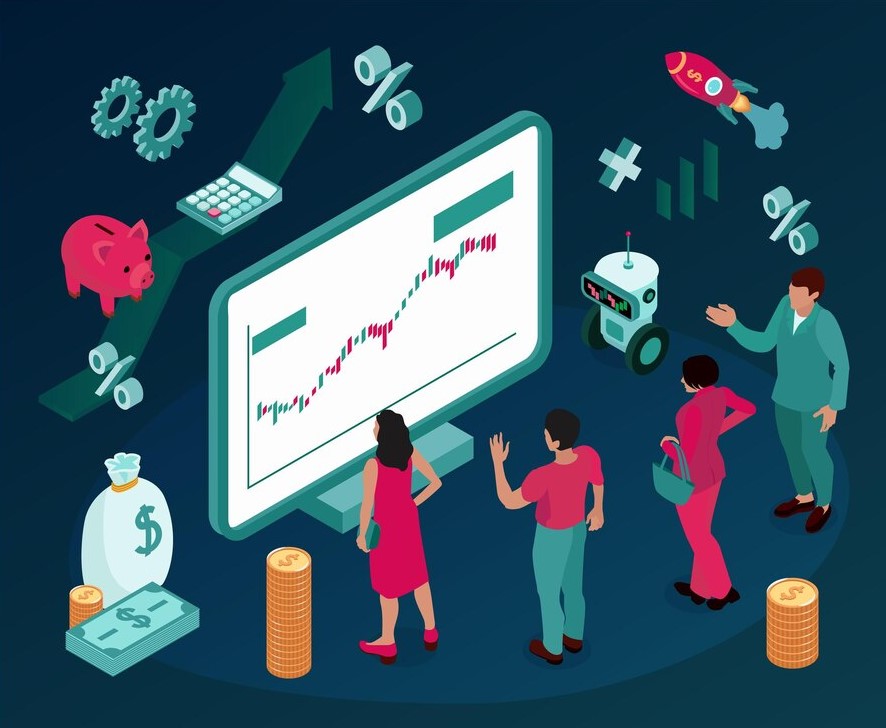Embracing technological advancements, automated trading systems have emerged as game-changers in the financial realm. In this article, we delve into the multifaceted benefits these systems bring, from streamlining processes to enhancing profitability. Let’s navigate the intricate landscape of automated trading and its transformative impact on financial markets.
Empowering Traders
Empowering traders through automated trading systems marks a significant paradigm shift in the financial landscape. These systems act as catalysts for individual traders, unleashing their full potential by automating the execution of trades. By doing so, traders are liberated from the routine manual tasks, allowing them to focus on refining their strategies and exploring new opportunities. This empowerment is not just about convenience but signifies a fundamental change in how traders engage with the dynamic world of financial markets.
The essence of empowering traders lies in the seamless execution of strategies. With automated trading systems, individuals can navigate the complexities of trading with efficiency and precision. The automation process ensures that trades are executed promptly, enabling traders to capitalize on favorable market conditions swiftly. This enhanced efficiency contributes to a more competitive edge, allowing traders to stay ahead in a fast-paced and ever-evolving market environment.
Moreover, the empowerment extends beyond mere task automation. Automated trading systems provide traders with the tools and insights necessary to make informed decisions. Through advanced analytics and data-driven insights, traders can gain a deeper understanding of market trends, enabling them to align their strategies with real-time conditions. This not only enhances decision-making but also cultivates a more strategic and knowledgeable approach to trading.
In essence, empowering traders is not just about automating processes but about providing them with the means to navigate the financial markets with confidence, agility, and a comprehensive understanding of the evolving landscape. It’s a transformative journey that elevates individual traders to a new level of proficiency and success.
Mitigating Risks
In the dynamic realm of financial markets, the significance of mitigating risks cannot be overstated. Automated trading systems play a pivotal role in this process, employing sophisticated algorithms and strategies to safeguard investments with precision. Here’s a closer look at how these systems effectively mitigate risks:
- Algorithmic Analysis: Automated trading systems leverage advanced algorithms to analyze market conditions in real-time. This proactive approach allows for the identification of potential risks before they materialize, enabling traders to take preemptive actions to protect their investments.
- Continuous Surveillance: Unlike human traders who may experience fatigue or oversight, automated systems operate 24/7, providing continuous surveillance of the market. This non-stop monitoring ensures that risks are identified and addressed promptly, even during off-hours or unexpected market fluctuations.
- Diversification Techniques: Automated trading systems facilitate diversification strategies by managing multiple assets simultaneously. This diversification spreads risk across various investments, reducing the impact of a potential downturn in any single market or asset class.
Diversification Strategies
| Strategy | Description | Benefits |
| Simultaneous Asset Management | Automated systems manage multiple assets concurrently, spreading risk across various investments. | · Reduces reliance on a single asset class
· Enhances portfolio resilience |
| Market and Sector Allocation | Allocates investments across different markets and sectors based on predefined criteria. | · Capitalizes on growth opportunities in varied sectors
· Minimizes the impact of sector-specific downturns |
| Global Market Exposure | Expands investment reach to global markets, tapping into diverse economic conditions. | · Broadens the scope for profit generation
· Mitigates risks associated with regional market fluctuations |
Cost-Efficiency
Cost-efficiency is a critical aspect of successful trading, and automated trading systems play a pivotal role in optimizing resources for sustainable and profitable trading. Let’s delve into the various dimensions of cost-efficiency:
- Minimizing Manual Intervention:
- Automated trading systems significantly reduce the need for manual intervention in trading processes.
- By automating repetitive tasks, these systems minimize human labor, saving time and resources.
- Reducing Human Resource Costs:
- With automation handling routine tasks, the dependency on human resources decreases.
- This reduction in human labor not only cuts costs but also allows for more strategic allocation of resources.
- Enhancing Operational Speed:
- Automated systems execute trades at lightning speed, minimizing the impact of market fluctuations.
- This speed enhances operational efficiency, leading to better utilization of resources and reduced opportunity costs.
Backtesting Capabilities
The backtesting capabilities of automated trading systems stand as a fundamental pillar for traders seeking to refine and optimize their strategies. Backtesting involves applying a trading strategy to historical market data to evaluate its performance. This powerful feature allows traders to learn from past successes and failures, shaping more effective approaches for future success.
One significant advantage of backtesting is the ability to assess how a particular strategy would have performed in real-world market conditions. Traders can analyze historical data, identifying patterns, trends, and potential pitfalls that may not be apparent in a theoretical setting. This retrospective analysis provides valuable insights into the viability and robustness of a trading strategy.
Integration with AI and Machine Learning
The integration of artificial intelligence and machine learning enhances the capabilities of automated trading systems. These intelligent technologies continually learn from market data, refining strategies and adapting to evolving market conditions.
Security Measures
Automated trading systems prioritize security, implementing robust measures to safeguard against cyber threats and unauthorized access. This commitment to security instills confidence in traders, allowing them to focus on their strategies without concerns about system vulnerabilities.
FAQs
How do automated trading systems enhance efficiency? Automated trading systems streamline operations, optimize trade execution, and minimize delays, resulting in quicker decision-making and enhanced overall performance.
Can automated trading systems adapt to dynamic market conditions? Yes, automated trading systems excel in adapting to market changes, providing traders with the agility to adjust strategies and navigate diverse market conditions successfully.
Are automated trading systems suitable for novice traders? Absolutely, automated trading systems democratize access to financial markets, making trading opportunities accessible to individuals with varying levels of experience.
Do automated trading systems eliminate emotional bias in decision-making? Yes, one of the significant advantages is the elimination of emotional bias, ensuring that decisions are based on predefined criteria and strategic analysis.
How do these systems contribute to portfolio diversification? Automated trading systems facilitate the implementation of diversified investment strategies by simultaneously managing multiple assets and markets.
What security measures are in place for automated trading systems? These systems prioritize security, implementing robust measures to safeguard against cyber threats and unauthorized access, ensuring a secure trading environment.




